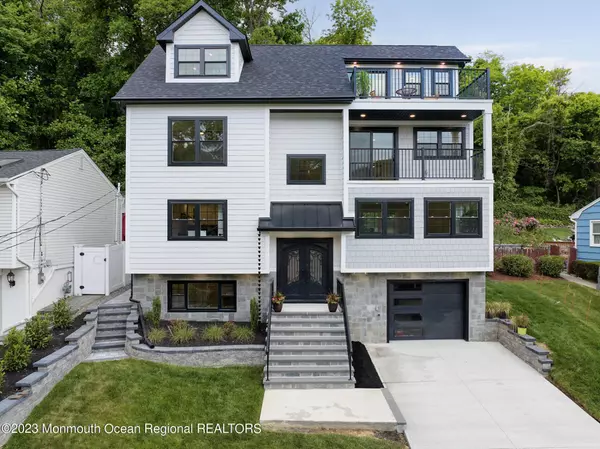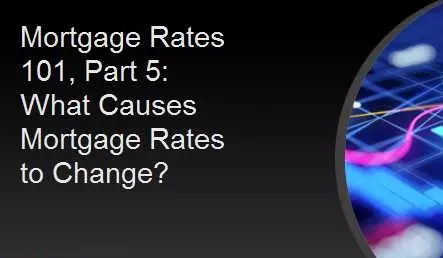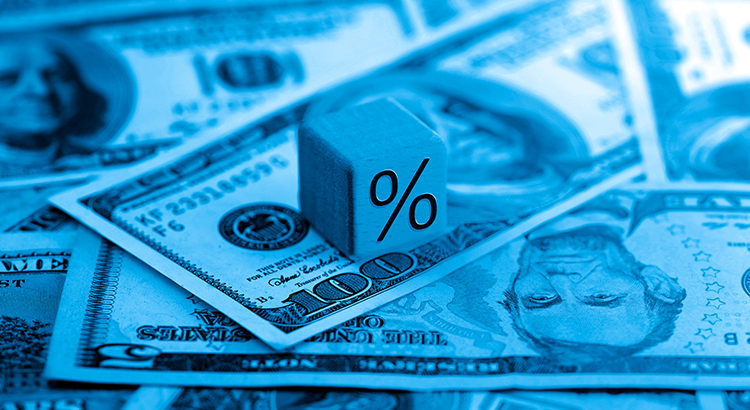What Homebuyers Need To Know About Credit Scores
What Homebuyers Need To Know About Credit Scores
If you’re thinking about buying a home, you should know your credit score’s a critical piece of the puzzle when it comes to qualifying for a home loan. Lenders review your credit to assess your ability to make payments on time, to pay back debts, and
New Home Construction From 14 Year Low to 13 Month High
30YR Fixed
6.90%
+0.03%
15YR Fixed
6.28%
+0.03%
New Home Construction Growth Swings From 14 Year Low to 13 Month High
Although the New Residential Construction report released by the Census Bureau has notoriously wide margins of error, it'
Saving for a Down Payment? Here’s What You Need To Know.
Saving for a Down Payment? Here’s What You Need To Know.
If you're planning to buy your first home, then you're probably focused on saving for all the costs involved in such a big purchase. One of the expenses that may be at the top of your mind is your down payment. If you’re intimidated by how mu
Nestled in Luxury: A Contemporary Dream Home in Highlands, NJ
Looking for a luxurious, modern home that offers breathtaking views of Sandy Hook Bay and the NYC skyline? Look no further than this stunning custom-built property located in the hills of Highlands, NJ.
With a listing price of $1,350,000, this complete home renovation boasts everything new, custom,
Mortgage Rates 101, Part 5: What Causes Mortgage Rates to Change?
30YR Fixed
6.89%
-0.01%
15YR Fixed
6.28%
-0.01%
Mortgage Rates 101, Part 5: What Causes Mortgage Rates to Change?
Mortgage rates change daily, and sometimes multiple times per day. In this article, “mortgage rates” will refer to th
Oops! Home Prices Didn’t Crash After All
Oops! Home Prices Didn’t Crash After All
During the fourth quarter of last year, many housing experts predicted home prices were going to crash this year. Here are a few of those forecasts:
Jeremy Siegel, Russell E. Palmer Professor Emeritus of Finance at the Wharton School of Business:
“I expect h
How do I get pre-approved for a mortgage?
Getting pre-approved for a mortgage is a crucial step in the home buying process. It allows buyers to know how much they can afford to spend on a home and shows sellers that they are serious about making an offer. But how exactly do you get pre-approved for a mortgage? In this blog, we’ll walk yo
How much is a house worth?
There is no one-size-fits-all answer to the question of how much a house is worth. A house's value depends on several factors, including the location, size, condition, and amenities of the home. The value of a house can also be affected by the current market conditions.
Here are some of the factors
Keys to Success for First-Time Homebuyers
Keys to Success for First-Time Homebuyers
Buying your first home is an exciting decision and a major milestone that has the power to change your life for the better. As a first-time homebuyer, it’s a vision you can bring to life, but, as the National Association of Realtors (NAR) shares, you’ll hav
The Benefits of Selling Now, According to Experts
The Benefits of Selling Now, According to Experts
If you’re trying to decide if now’s the time to sell your house, here’s what you should know. The limited number of homes available right now gives you a big advantage. That’s because there are more buyers out there than there are homes for sale. An
Mortgage Applications Decrease Again, Volatile Rates, Stagnant Inventories
30YR Fixed
6.98%
-0.03%
15YR Fixed
6.27%
-0.03%
Mortgage Applications Decrease Again, Volatile Rates, Stagnant Inventories
The Mortgage Bankers Association (MBA) said its Market Composite Index, a measure of mortgage loan applicat
Why Buying a Vacation Home Beats Renting One This Summer
For many of us, visiting the same vacation spot every year is a summer tradition that’s fun, relaxing, and restful. If that sounds like you, now’s the time to consider your plans and determine if buying a vacation home this year makes more sense than renting one again. According to Forbes:
“. . .
The Process of Buying Your First Home in Monmouth County
Introduction: Embrace the Home Buying Adventure
Ready to dive into the crazy waters of home buying? Sure, it’s exciting, nerve-wracking, and you'll learn more about septic systems than you ever cared to know. But hey, welcome to adulting in Monmouth County, New Jersey!
Understanding the Loca
Lack of Existing Home Listings Boost Builder Confidence
30YR Fixed
6.69%
+0.02%
15YR Fixed
6.05%
+0.01%
Lack of Existing Home Listings Boost Builder Confidence
Home builders’ attitudes about the market for newly constructed homes continued to improve in May, partially due to the lack o
Word Of The Day: Consolidation
30YR Fixed
6.67%
+0.12%
15YR Fixed
6.04%
+0.09%
Hi, My Name is Consolidation, And I Can Explain Everything
Scroll down far enough on the list of Webster's definitions of the word "consolidate," and you'll find "to form together in
Buyer Activity Is Up Despite Higher Mortgage Rates
Buyer Activity Is Up Despite Higher Mortgage Rates
If you’re a homeowner thinking about making a move, you may wonder if it’s still a good time to sell your house. Here’s the good news. Even with higher mortgage rates, buyer traffic is actually picking up speed.
Data from the latest ShowingTime Sho
Lowest Mortgage Rates in Weeks After Fed Hikes Rates. Here's How That Works...
30YR Fixed
6.49%
-0.09%
15YR Fixed
5.90%
-0.10%
Lowest Mortgage Rates in Weeks After Fed Hikes Rates. Here's How That Works...
The implication of "Fed rate hikes" is a constant source of confusion in the housing market. The gener
Housing and Rates Having Tough Time Finding Momentum
30YR Fixed
6.73%
+0.14%
15YR Fixed
6.12%
+0.14%
Housing and Rates Having Tough Time Finding Momentum
Mortgage rates fell nicely to start the week but only after rising rather abruptly in the previous two weeks. That said, short te
Mortgage Application Volume Increases Despite Higher Rates
Mortgage application volume increased during the week ending April 21. The Mortgage Bankers Association (MBA) said its Market Composite Index, a measure of that volume, rose 3.7 percent on a seasonally adjusted basis compared to the prior week and was 5 percent higher before adjustment.
The Refin
Is There Really a New, Unfair Mortgage Tax on Those With High Credit?
30YR Fixed
6.66%
-0.01%
15YR Fixed
6.04%
-0.01%
Is There Really a New, Unfair Mortgage Tax on Those With High Credit?
Seemingly overnight, the internet is awash with news regarding a "new," unfair tax on mortgage borrowers with hi

Ryan Skove, ABR, SRS
Phone:+1(732) 365-0265




















